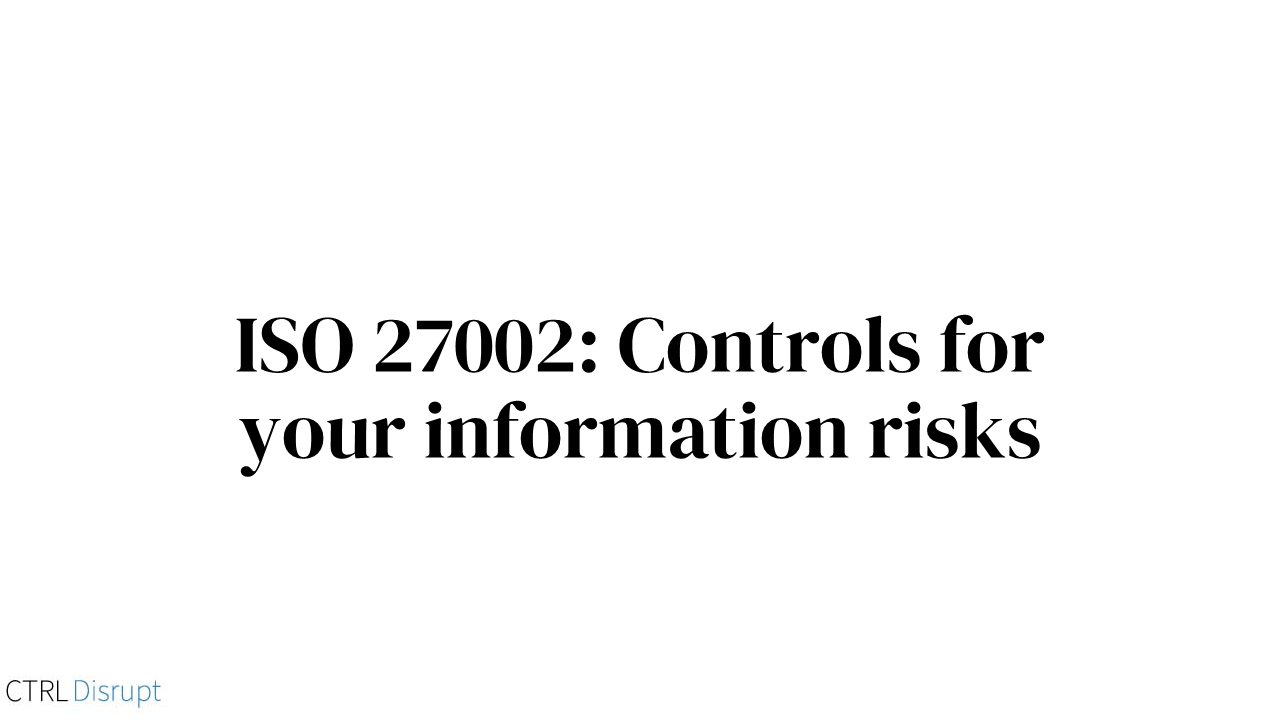Understanding ISO 27005: A Guide for Organizations
Introduction
The International Organization for Standardization (ISO) is a non-governmental international body that develops and publishes a wide range of standards. Among these, ISO 27005 is a part of the ISO 27000 series, which focuses on information security standards. ISO 27005, in particular, provides guidelines for information security risk management.
What is ISO 27005?
ISO 27005 is a standard that provides a framework for managing information security risks. It is not a one-size-fits-all approach, but rather a flexible framework that can be tailored to the specific needs and risk environment of any organization. The standard provides guidelines on how to assess, treat, accept, and communicate information security risks within an organization.
The standard does not specify or recommend any specific risk assessment method. Instead, it provides a detailed, process-oriented approach to information security risk management. This includes the identification and assessment of risks, risk treatment, risk acceptance, risk communication, and risk monitoring and review.
Why Should Organizations Use ISO 27005?
As organizations digitalize more and more, their digital assets become one of the most valuable assets an organization can have. However, with the increasing reliance on digital information and technology, the risks associated with information security are also growing. These risks can come from various sources, such as cyber-attacks, data breaches, and even internal threats.
Implementing ISO 27005 can help organizations manage these risks effectively. By following the guidelines provided by the standard, organizations can identify potential risks, assess their impact, and take appropriate measures to mitigate them. This can help prevent potential information security incidents, protect the organization's information assets, and maintain the trust of stakeholders.
Moreover, implementing ISO 27005 can also help organizations comply with legal and regulatory requirements related to information security. This can help avoid potential legal issues and penalties, and enhance the organization's reputation.
How Can Organizations Use ISO 27005?
Organizations can use ISO 27005 by integrating it into their existing risk management processes. The first step is to understand the organization's information security risk environment. This involves identifying the information assets that need to be protected, the threats to these assets, and the vulnerabilities that could be exploited.
Once the risk environment is understood, the organization can assess the risks. This involves evaluating the potential impact of each risk and the likelihood of it occurring. Based on this assessment, the organization can decide how to treat each risk. This could involve mitigating the risk, transferring it, accepting it, or avoiding it.
After the risks have been treated, the organization needs to monitor and review the risks regularly. This is because the risk environment can change over time, and new risks may emerge. Regular monitoring and review can help the organization stay on top of these changes and adjust their risk management strategies accordingly.
Getting Started with ISO 27005
Implementing ISO 27005 can be a complex process, but it can be made easier with the right approach. Here are some steps to get started:
-
Understand the Standard: The first step is to understand the standard and its requirements. This can be done by reading the standard and related materials, attending training courses, or consulting with experts (such as CTRL Disrupt).
-
Assess the Current Situation: The next step is to assess the current state of information security risk management in the organization. This can help identify the gaps that need to be addressed.
-
Develop a Plan: Based on the assessment, the organization can develop a plan to implement the standard. This should include the objectives, tasks, resources, and timeline.
-
Implement the Plan: The organization can then start implementing the plan. This involves carrying out the tasks, monitoring progress, and making adjustments as necessary.
-
Review and Improve: After the implementation, the organization should review the effectiveness of the risk management process and make improvements as necessary. This is a continuous process that should be carried out regularly.
It is crucial to understand that a standard is just that, a standard. Organizations must assess if the standard will help them achieving their goals. Furhermore, the organization must decide if they fully follow it, or take is as a basis and further develop and customize their approach to fit their context best.
In conclusion, ISO 27005 is a valuable tool for managing information security risks. It provides a flexible and comprehensive framework that can be tailored to the specific needs of any organization. By implementing ISO 27005, organizations can protect their valuable information assets, comply with legal and regulatory requirements, and enhance their reputation.

 By
By


